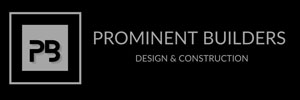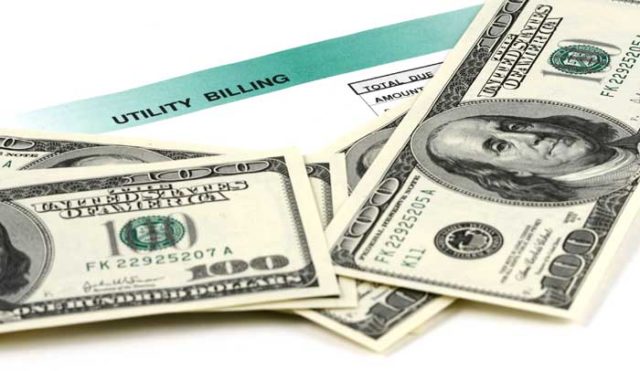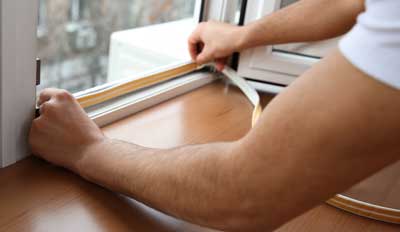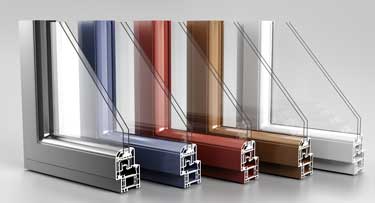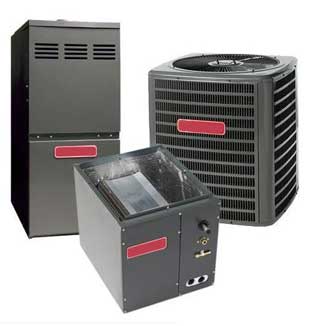As most Americans spent the majority of their time working, schooling, and living from home during the last few months, this increased the demand on their utility needs. The increased demand, along with raising rates and warmer temperatures means more is coming out of your wallet.
If you are like most people who like to pay less on their bills, you may want to consider ways to improve your home’s overall energy efficiency. Right now is a good time to think about some changes, especially with winter around the corner.
Making lower cost and sometimes larger investments to improve the energy efficiency of your home does not only positively affect the bottom line of your utility bill, it could result in potential tax savings and also increase the resale value of your home.
In this month’s blog we will look at a variety of solutions for improving the energy efficiency of your home – from low cost solutions to others that may require more upfront investment but have a big payoff in the end.
Low Cost Energy Improvements
Besides the appliances and other electronic gadgets we use on a regular basis, your home’s biggest energy deficits are your windows and doors. In fact, the average home can lose from 30-70% of its heat or cool air through windows and doors.
Here are some low cost ways to reduce the amount of energy loss in windows and doors:
Replace worn weather stripping: The weather stripping around your exterior door frames are subject to wear and tear over time and with continued use of the doors. Since most weather stripping is made from rubber, it can age and get dry or brittle from temperature extremes. If you have the ability to use thermal imaging tools, you should be able to detect where the loss of energy is around your doors and windows. But if you don’t have access to those tools, just put your hand around your door frames to feel where the heat or cold may be entering your home. Purchase higher quality weather stripping materials and replace the entire strip around your doors. Don’t forget the threshold either.
- Seal Your Windows: Windows require a good seal between the window frame and your window opening. If windows are not properly sealed, you will have air leaks and also may even have moisture intrusion. A good test of how well your windows are sealed is to squirt a hose on them from outside the home. If you find that water is coming in through areas on the window, then those should be sealed. Be prepared with towels on the inside of your home to catch any water from the hose so you don’t damage any furniture or sills! It’s a good idea to run the sealant across all areas to ensure you have not missed any leaks.
Low Cost Window Film: If you have a large window in your home, you are probably dealing with a lot of heat generated through the glass, causing your AC to work harder. Or in the reverse, more cold coming through the glass making your heat work harder. There are low costs protective films that you can purchase in home improvement stores or online that can be cut to size. Many of these are magnetic and can be removed easily. If you don’t want to invest in window replacements, films are a more cost effective solution.
Higher Cost Energy Improvements
The new home construction process gives us many opportunities to consider technology and of course, advances in construction that are beneficial to energy savings.
A few examples of newer construction benefits may include:
- Radiant Barrier Roofing
- Solar Panels
- Low-e glass (or low emissivity)
- Higher rated attic insulation
- Tank-less water heaters (require a gas line or hookup)
- Smart home technology, including auto on/off lights and adaptive thermostats
If you are thinking about ways to improve your existing home, you can still implement any of these new home construction improvements to make a big difference for energy savings. While you are at it, why not redo that kitchen or bathroom or add on space to your existing home. Regardless of your project, it is always advisable to “do your math” by looking at the cost benefit of improvements and the possible return on investment (ROI). Also, consider how long you plan to remain in the home.
Here are a few ideas for energy improvements to your home:
- Replacing attic insulation: When considering changing your insulation, you want to think about the “R” rating. The R rating is the insulation material’s ability to transfer heat. Spray insulation can be in different forms, with cellulose being one of the more effective insulation materials. You should have a professional evaluate your current insulation and make recommendations for the right materials to replace your insulation.
- Replacing Windows: Window replacement is most effective when it is full house replacement. There are a variety of energy efficient windows (double and triple pane) with low-e glass. Low-e windows help to keep heat inside in the winter and heat outside during the summer. Again, consider working with a professional who can advise you on the best type of glass to choose for your home.
- Upgrading HVAC Systems: Older HVAC systems are not designed to meet the demands of today’s homes. Consider upgrading to a more efficient system and make sure to include more advanced thermostat technology. High tech thermostats give us the ability to program temperature changes, monitor energy use, and control the system via our mobile phones.
Whether you are building a new home, or just want to improve your existing home, there are many ways you an address your energy savings.
Contact Prominent Builders and Design today for a thorough review of your home. We can make recommendations for energy savings projects, big or small! We can also perform the work and provide qualified professionals to help support any project.
